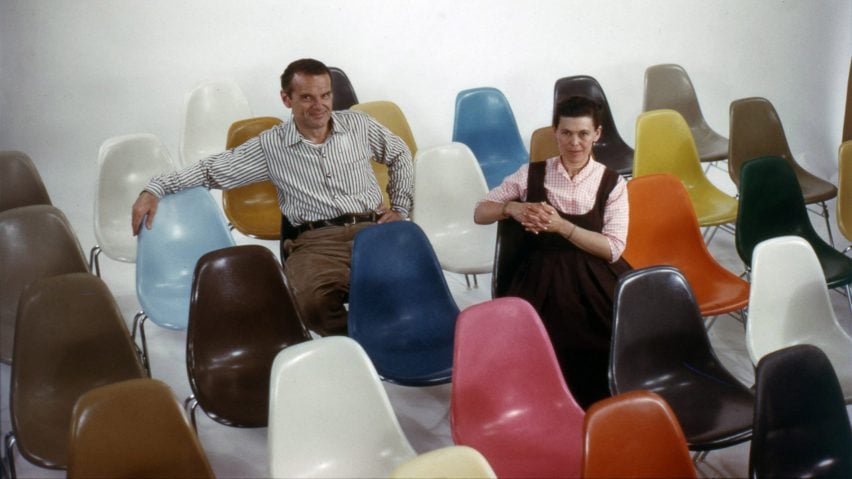
Eames Shell chair aims to get "the best to the greatest number of people for the least"
Continuing our series on mid-century modern design, we spotlight the Eames Shell chair, which features a seat that was moulded to the contours of the human body.
Created by design duo Charles and Ray Eames in the summer of 1949, the Eames chair became hugely influential in a period of mass production across the United States.
Produced by furniture company Herman Miller from 1950, the fibreglass chair presented an innovative furniture typology and has become one of the best-known furniture designs of the twentieth century.
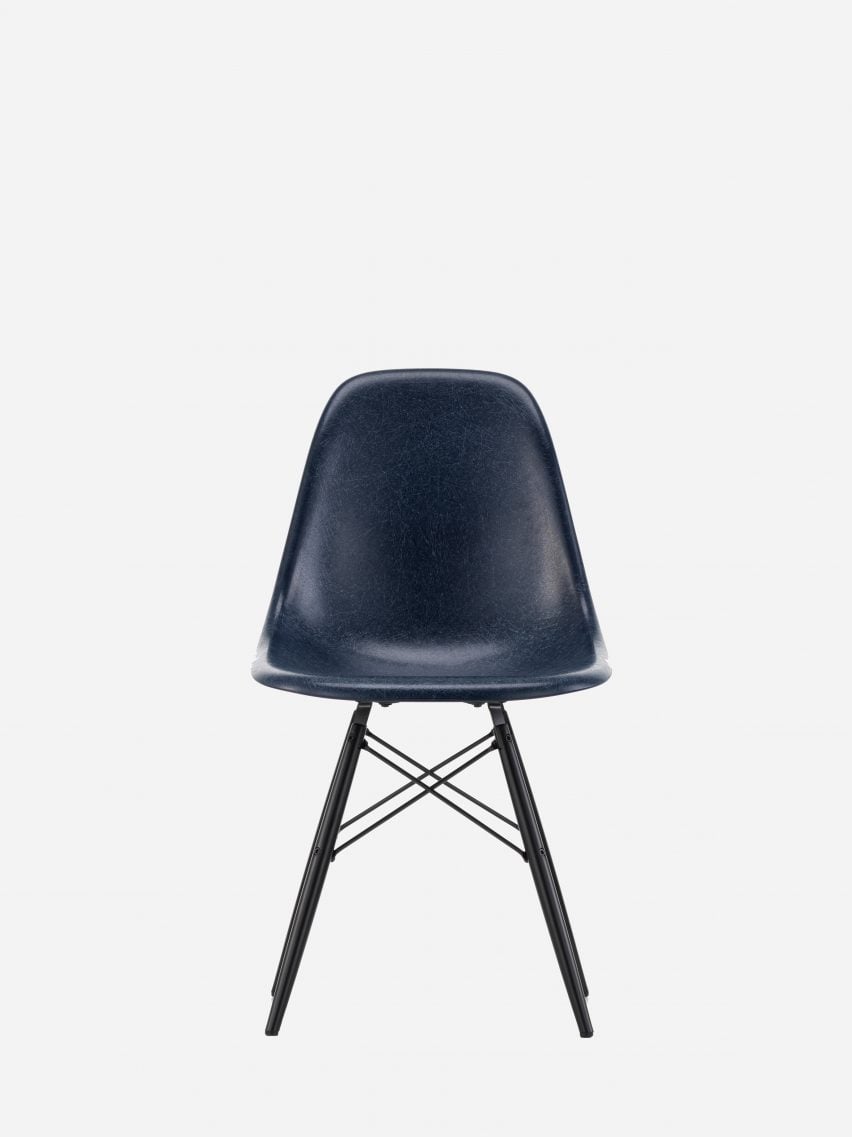
The chair is defined by its organically shaped shell made from glass fibre-reinforced polyester resin, a type of plastic that the couple started working with after it was developed by the US military.
Its seat was moulded to embrace the contours of its user and is raised on a network of steel or wooden legs.
The smooth form of the one-piece seat dips towards the rear, before rising up to form its backrest, which tilts backwards and tapers inwards to cradle the user.
The Shell chair was the latest in a line of chairs designed by Ray and Charles Eames, who met at the Cranbrook Academy of Art before marrying in 1941 and moving to Los Angeles where they established the design studio Eames Office.
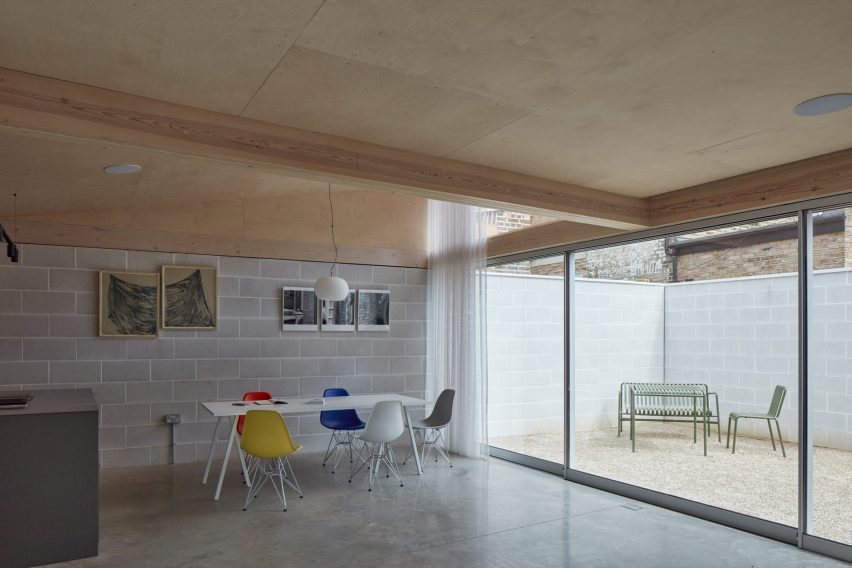
The duo's first chair was the plywood Lounge Chair Wood, created in 1945, which showcased new ways of working with plywood.
Continuing their material experiments, in 1948, they created the first prototype for the Shell chair, which won second place in the Low-Cost Furniture Design competition organised by the Museum of Modern Art.
Following the win, the designers conducted experiments in search of a cheaper and more practical material for mass-produced furniture, which ultimately led to their use of fibreglass.
"The point was not fiberglass, the point was the 'need,'" Eames Office director Eames Demetrios told Dezeen.
"It was a belief that if you could harness the cost – for example: no upholstery cost –, comfort and elegance efficiencies of making the seat and back one, you would fulfill a need people may not have even realized they had."
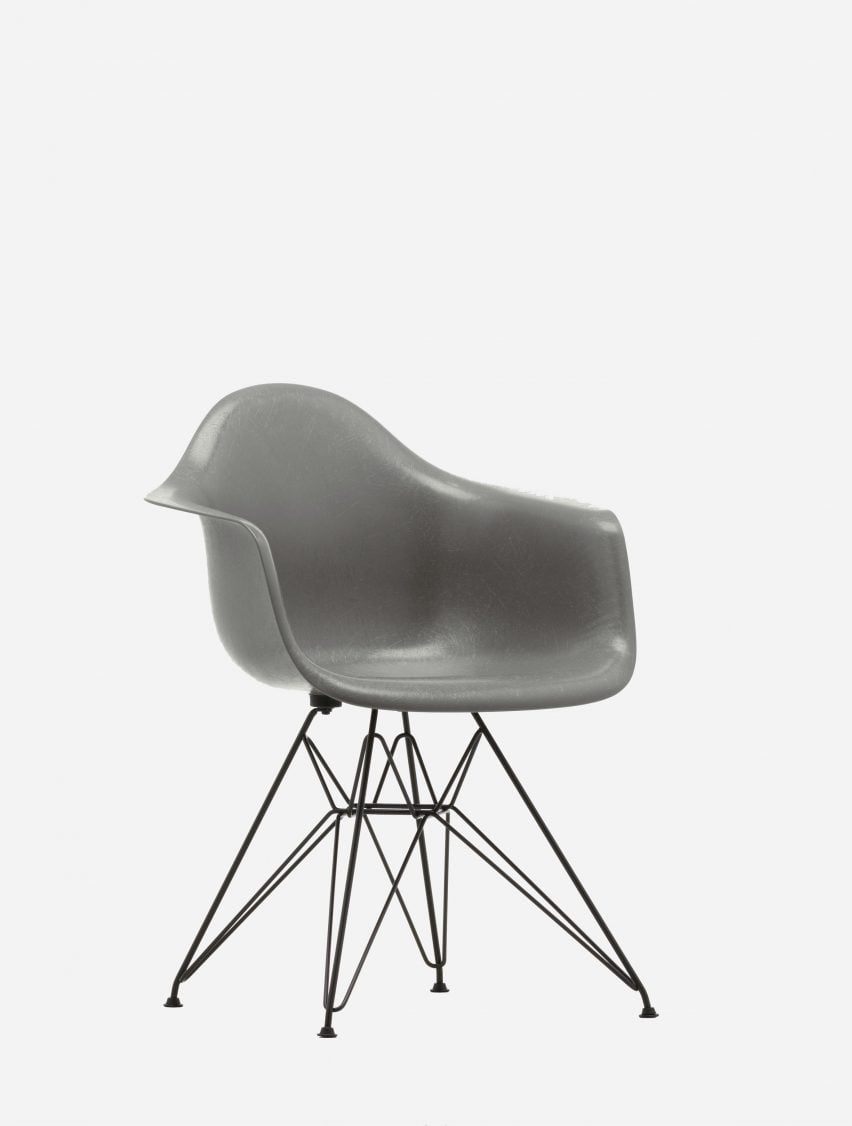
Integral to the success of the Eames Shell chairs was their ability to be mass-produced, which reflects the duo's goal of "getting the most of the best to the greatest number of people for the least", as Charles Eames said in a LIFE magazine interview in 1950.
A number of variations of the original Eames chairs, which become known as the Plastic Group, enhanced their adaptability and multifunctional qualities and have contributed to their endured success.
Among the first iterations to be launched was the Shell armchair. Also made from moulded fibreglass, the Shell armchair features an ergonomic seat that curves upwards at its sides to form an armrest.
The designers also created a side chair for the collection, which became the first mass-produced plastic chair in the history of furniture.
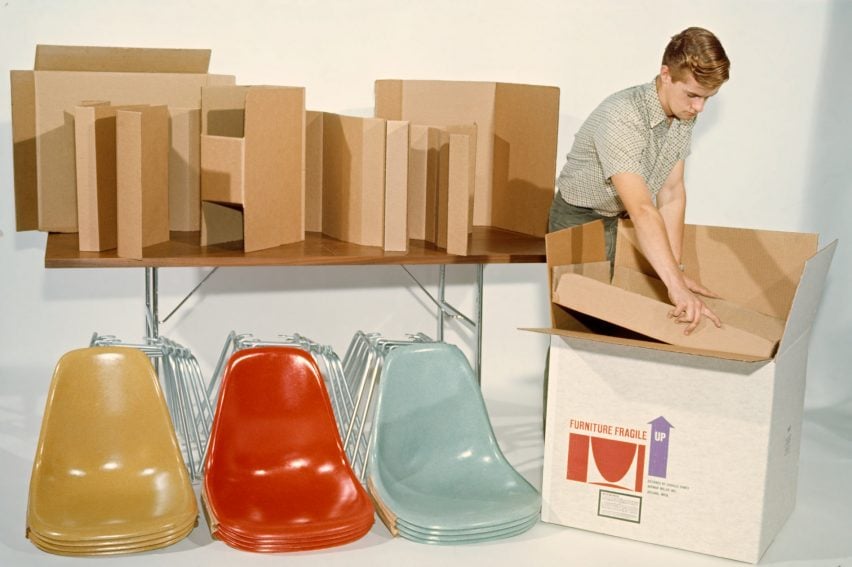
The original fibreglass seats were designed to be combined with a variety of bases – including a four-legged base made from steel and a rocker – to enable various seating positions.
"The role of the designer is that of a very good, thoughtful host anticipating the needs of his guests," Charles Eames said.
The rocker was used to create the Rocking Armchair Rod (RAR), developed in 1950, which features a swaying seat sat on a network of steel rods connected to birch rockers.
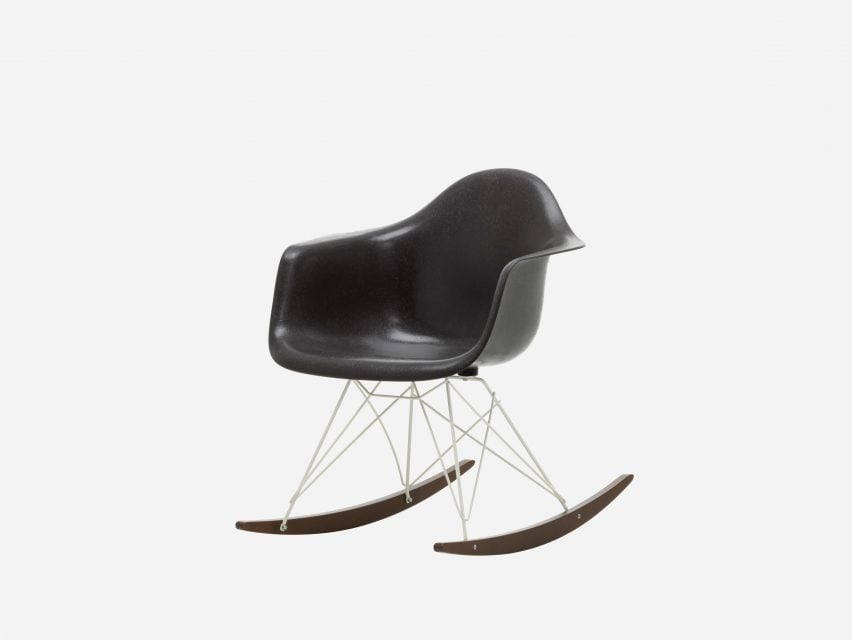
The colour range of the Shell chairs was also expanded from the original three colours of elephant-grey, greige and parchment to up to 30 colours.
Due to its environmental impact, the use of fibreglass for the shell chairs was discontinued first by Herman Miller in 1989 and later by Vitra, which is the partner to the Eames Office for Europe and the Middle East, in 1993.
Both companies began to instead use polypropylene as an alternative for their production.
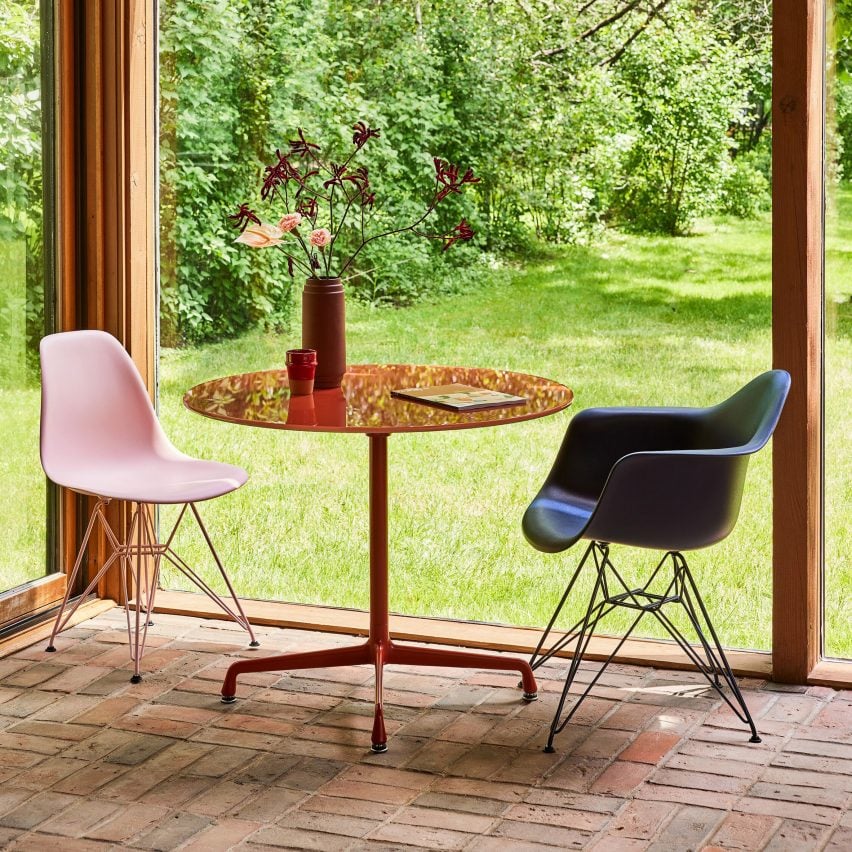
Working through the 1950s and 60s, the Eameses moved into other furniture typologies. Among these is the Model 671 ottoman chair, made from rosewood plywood, aluminium and leather upholstery in 1956, which has become another classic.
Their design expertise later expanded to architecture, with the creation of the two-storey Case Study House #8, known as Eames House, which became one of the most influential mid-century modern houses.
Since the passing of Charles in 1978 and Ray in 1988, the shell chairs remain in production through a collaboration between the Eames Office and its product partners Herman Miller and Vitra.
Continued demand and popularity of the Eames chairs have led to their evolution over the years.
"It lasts today, because the Eameses focussed on the need, not a pre-selected solution," Demetrios concluded. "This allowed them and now us at the Eames Office today to thoughtfully improve the chair with more eco-friendly plastics."
"And even now, we have made the chair with post-consumer recycled plastic. All the same chair that they envisioned decades ago."
In January of this year, Vitra launched the Eames Plastic Chair RE range, which sees a shift to recycled plastic for the manufacturing of the chairs' shells.
The chair also lives on in collaborations, such as the recent Herman Miller x Hay range. This encompasses eight Eames chairs that were reimagined by Danish design brand Hay to create "Eames designs for a new generation".
The photography is courtesy of Eames Office unless otherwise stated.
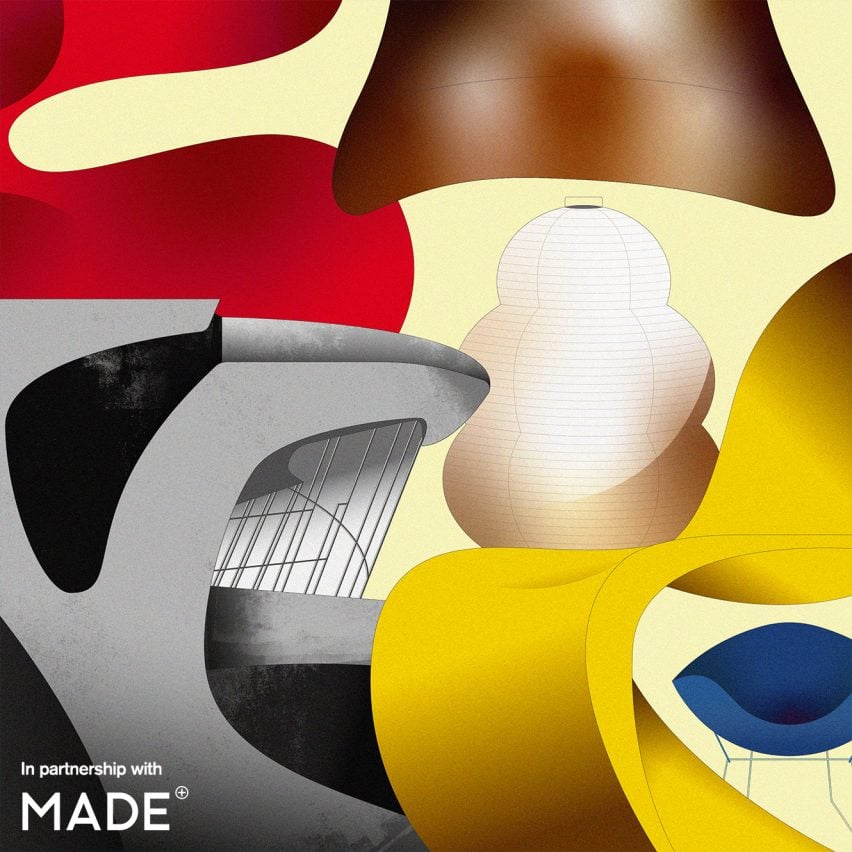
Mid-century modern
This article is part of Dezeen's mid-century modern design series, which looks at the enduring presence of mid-century modern design, profiles its most iconic architects and designers, and explores how the style is developing in the 21st century.
This series was created in partnership with Made – a UK furniture retailer that aims to bring aspirational design at affordable prices, with a goal to make every home as original as the people inside it. Elevate the everyday with collections that are made to last, available to shop now at made.com.